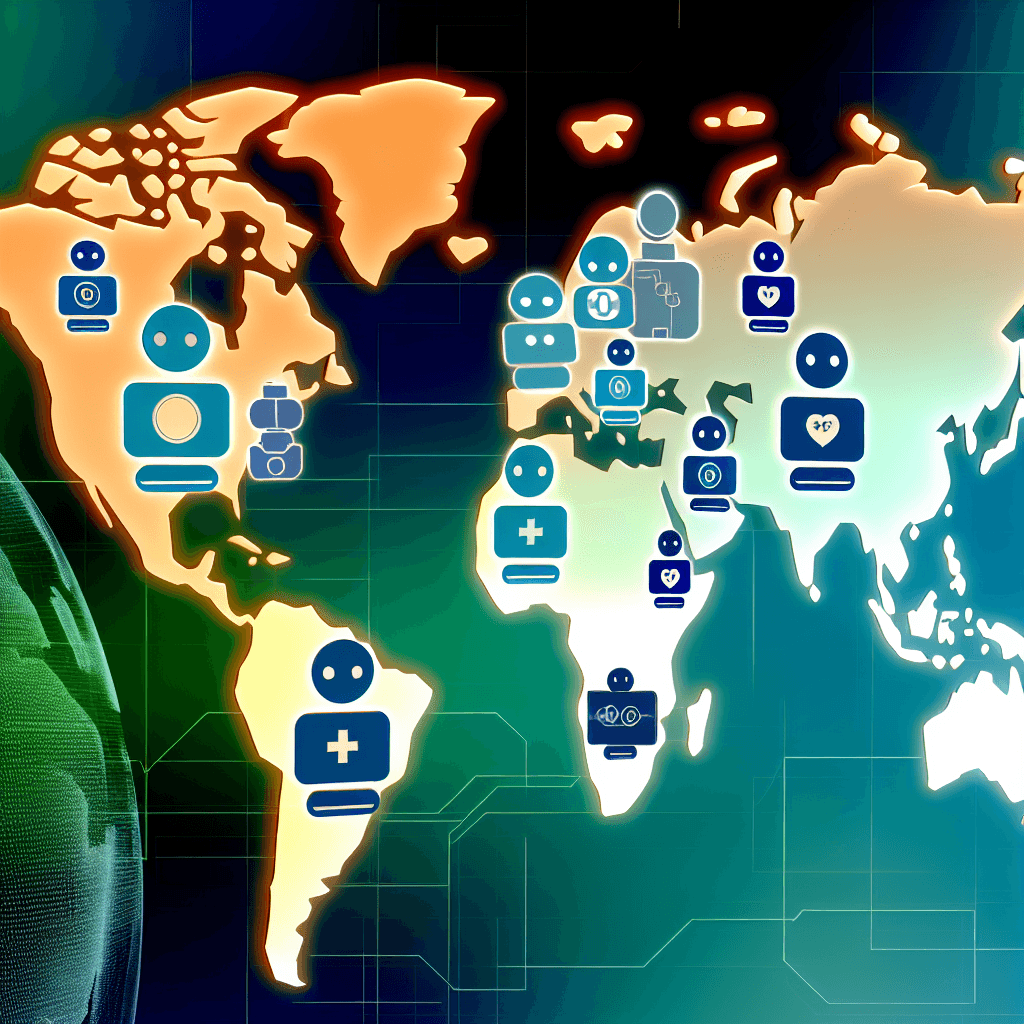Explore the global healthcare chatbots market size by type, application, and region, with forecasts and trends analysis.
Global Healthcare Chatbots Market Size By Type, By Application, By Geographic Scope And Forecast

Table of Contents
- Global Healthcare Chatbots Market Size By Type, By Application, By Geographic Scope And Forecast
- Understanding Healthcare Chatbots
- Market Size and Forecast
- Market Segmentation
- By Type
- By Application
- By Geographic Scope
- Driving Factors and Challenges
- Driving Factors
- Challenges
- Case Studies and Real-World Examples
- Conclusion
Global Healthcare Chatbots Market Size By Type, By Application, By Geographic Scope And Forecast

The integration of artificial intelligence (AI) in healthcare has revolutionized many aspects of patient care and administrative processes, among which chatbots stand out as a particularly innovative tool. Healthcare chatbots are AI-driven platforms that are increasingly being used for a variety of applications, from patient engagement to automated customer support. This article explores the global healthcare chatbots market, examining its size by type, application, and geographic scope, and provides a forecast for its growth.
Understanding Healthcare Chatbots
Healthcare chatbots are AI-enabled virtual assistants designed to streamline interactions between healthcare providers and patients. They simulate human conversation through text or voice communications, allowing for automated, instant responses to patient inquiries. The capabilities of these chatbots can range from providing basic health information to scheduling appointments, and even assisting in patient treatment adherence.
Market Size and Forecast
The global healthcare chatbots market has been experiencing significant growth and is expected to continue its upward trajectory. According to recent studies, the market was valued at approximately USD 122 million in 2019 and is projected to reach USD 345 million by 2026, growing at a compound annual growth rate (CAGR) of 15.7% during the forecast period.
Market Segmentation
By Type
The healthcare chatbots market is segmented into two main types:
- Software: This segment includes standalone applications and web-based applications that are primarily used for patient interaction and data collection.
- Services: This includes integration, support, and maintenance services provided by various companies to healthcare providers.
By Application
Healthcare chatbots find application in several areas including:
- Symptom Checking and Medication Assistance: Chatbots provide initial diagnosis and medication reminders to ensure adherence to prescriptions.
- Appointment Scheduling and Medical Guidance: These platforms assist patients in scheduling their appointments and provide necessary pre-consultation guidance.
- Customer Support: Chatbots offer 24/7 customer support, answering queries related to hospital services, billing, and more.
By Geographic Scope
The global healthcare chatbots market is analyzed across several key regions:
- North America: The U.S. and Canada are leading in the adoption of healthcare chatbots due to advanced healthcare infrastructure and high healthcare expenditure.
- Europe: Countries like the UK, Germany, and France are rapidly adopting these technologies, driven by supportive government initiatives and a focus on healthcare innovation.
- Asia-Pacific: This region is expected to witness the fastest growth due to increasing internet penetration and a growing focus on digital health solutions.
- Rest of the World: Regions including Latin America and the Middle East are gradually integrating healthcare chatbots, with growth driven by increasing healthcare awareness and IT adoption.
Driving Factors and Challenges
Driving Factors
Several factors are driving the growth of the healthcare chatbots market:
- Increasing Demand for Virtual Health Assistance: The growing need for efficient and instant communication in healthcare is a major driver.
- Technological Advancements: Innovations in AI and machine learning are enhancing the capabilities of chatbots, making them more appealing to healthcare providers.
- Cost Efficiency: Chatbots reduce operational costs by automating routine tasks and improving resource allocation.
Challenges
Despite the advantages, there are challenges that hinder market growth:
- Data Privacy Concerns: Handling sensitive patient data requires stringent security measures, which can be a barrier to adoption.
- Lack of Awareness and Trust: In some regions, there is still a lack of awareness about the benefits of healthcare chatbots, coupled with trust issues regarding their advice and capabilities.
Case Studies and Real-World Examples
Several successful implementations of healthcare chatbots provide insights into their potential:
- Babylon Health: Based in the UK, this health service provider uses a chatbot to offer medical AI consultation based on personal medical history and common medical knowledge.
- HealthTap: An American company that provides a range of services including a chatbot that connects users with doctors for health advice.
Conclusion
The global healthcare chatbots market is poised for significant growth, driven by technological advancements, increasing demand for virtual health assistance, and cost efficiency. While challenges like data privacy and lack of awareness persist, the benefits provided by these AI-driven tools in enhancing patient care and operational efficiency are undeniable. As the technology continues to evolve and integrate deeper into the healthcare sector, the scope for innovation and improvement is vast, promising a future where healthcare is more accessible, efficient, and effective through the use of chatbots.








